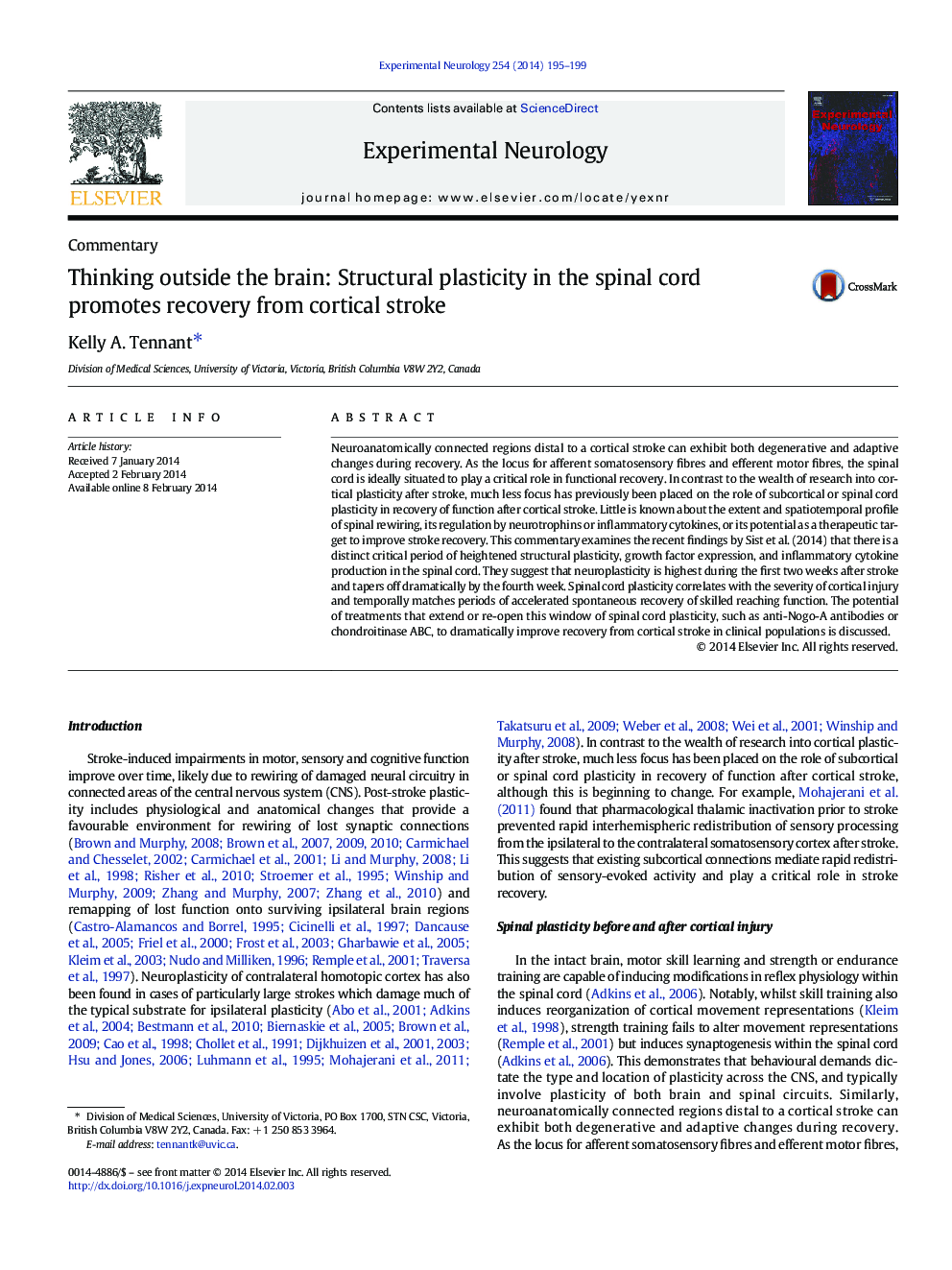| Article ID | Journal | Published Year | Pages | File Type |
|---|---|---|---|---|
| 6017863 | Experimental Neurology | 2014 | 5 Pages |
Abstract
Neuroanatomically connected regions distal to a cortical stroke can exhibit both degenerative and adaptive changes during recovery. As the locus for afferent somatosensory fibres and efferent motor fibres, the spinal cord is ideally situated to play a critical role in functional recovery. In contrast to the wealth of research into cortical plasticity after stroke, much less focus has previously been placed on the role of subcortical or spinal cord plasticity in recovery of function after cortical stroke. Little is known about the extent and spatiotemporal profile of spinal rewiring, its regulation by neurotrophins or inflammatory cytokines, or its potential as a therapeutic target to improve stroke recovery. This commentary examines the recent findings by Sist et al. (2014) that there is a distinct critical period of heightened structural plasticity, growth factor expression, and inflammatory cytokine production in the spinal cord. They suggest that neuroplasticity is highest during the first two weeks after stroke and tapers off dramatically by the fourth week. Spinal cord plasticity correlates with the severity of cortical injury and temporally matches periods of accelerated spontaneous recovery of skilled reaching function. The potential of treatments that extend or re-open this window of spinal cord plasticity, such as anti-Nogo-A antibodies or chondroitinase ABC, to dramatically improve recovery from cortical stroke in clinical populations is discussed.
Related Topics
Life Sciences
Neuroscience
Neurology
Authors
Kelly A. Tennant,
